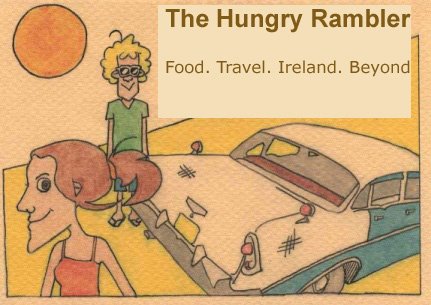People get hooked on falafel after travelling to the most exotic places: Egypt, Lebanon, Turkey... I can't really point out the exact moment I got addicted to falafels. I have never been to the Middle East so it is quite possible it was in the middle of a bog in County Roscommon circa 2006.
 |
| third-time lucky falafels |
What is this random Galician from Co. Wexford doing in the middle of a bog eating falafels? you might ask. Well, that is a question I have asked myself many times too. It was one of the first years of the Mantua music (and arts?) festival in Ballagahderreen. Yes, it was in a bog: soggy, wet and miserable (even though it was the middle of the summer). There was no toilets for half the duration of the festival and one of the few food options at the festival was, of course, falafel wraps.
I came home swearing I would never ever go to another festival again (if it's located in prime bog-location and it's raining) and never touch another chickpea. But I was wrong, at least in the second instance anyway. My temporary falafel overdose in boggy Roscommon seemed to have triggered a need for mushy chickpeas every now and then.
Then I was lucky enough to live close to the Gorey Farmers Market with Mohammed's best ever Lebanese style falafel wraps. Mohammed is now gone (to bigger markets) but the Gorey market has recently got a new 'falafel man', this time from Syria. And while I do miss Mohammed's falafels, the new ones are amazingly good as well.
In between Mohammed's departure and the new arrival, we had a few sad falafel-free months, so I tried to feed my addiction by DIYing it: The first time I used tinned chickpeas: too mushy. The second time I used dry chickpeas but without cooking them (I was following a recipe!): way too crunchy. And this week I have tried with dry chickpeas but boiling them for while.
They are the best I have done so far, hence the 'third-time lucky' name. I had tried to make them with a packet mix once but that doesn't count (and they were too mushy too, for your information). So here's the recipe:
Ideally, you would need a food processor to get a paste of the right consistency but I have combined some patient fork-squashing moves and a blender. Time consuming but hey, it is worth it.
With 500 gr of dry chickpeas you will make approximately 40 falafels (too much even for falafel freaks but I was only experimenting, remember). You will need to soak the chickpeas overnight. Note to myself: try doing about half of that amount next time.
I boiled the chickpeas for about 15/20 minutes, although some recipes suggest you can just use the food processor to get a coarse paste without boiling them.
I chopped a big onion, three garlic cloves, a bunch of fresh parsley, a bunch of fresh coriander and mixed with the chickpeas. Then I tried to blend it but I didn't want a very mushy consistency (it is up to you!) so I combined it with the 'highly advanced' fork-smashing technique ;-). Really, I need to buy a food processor for this type of thing.
I added about 3/4 teaspoons of ground cumin, one of chilli flakes (ground would work too), salt and two tablespoons of flour.
I mixed the paste well and rolled it into little falafel balls and put them in the oven with a drizzle of olive oil for about 30 minutes (shaking every so often so they go crispy all around).
We ate them with toasted pitta bread, lettuce, tomato, hummus and some yogurt (I grated some garlic into it). And it was a great success!
Next time I must try using a processor, just to get an even consistency.
I'll still keep going to get the 'pro' market falafels but this will do the job when I need to kill that falafel craving...

























